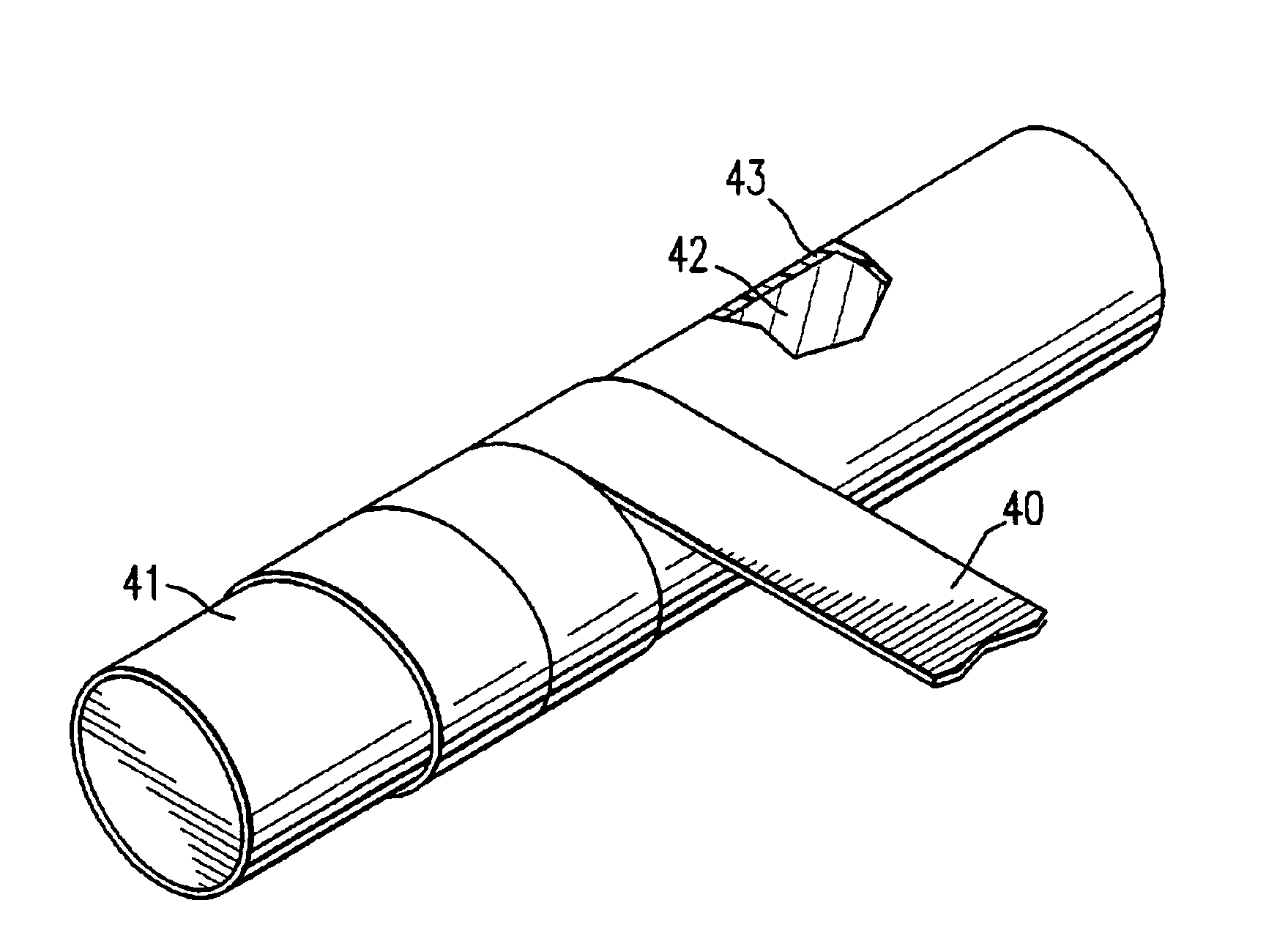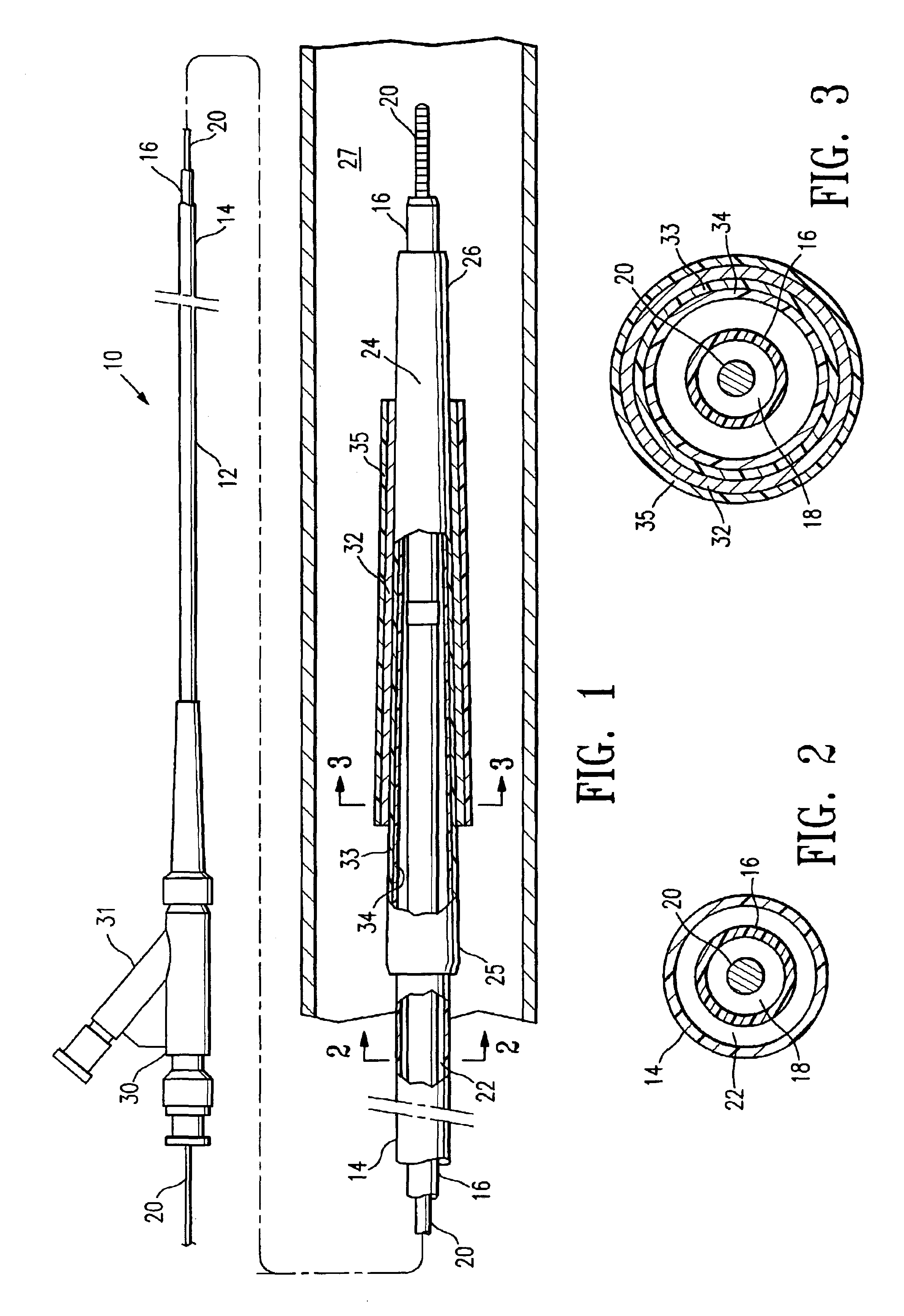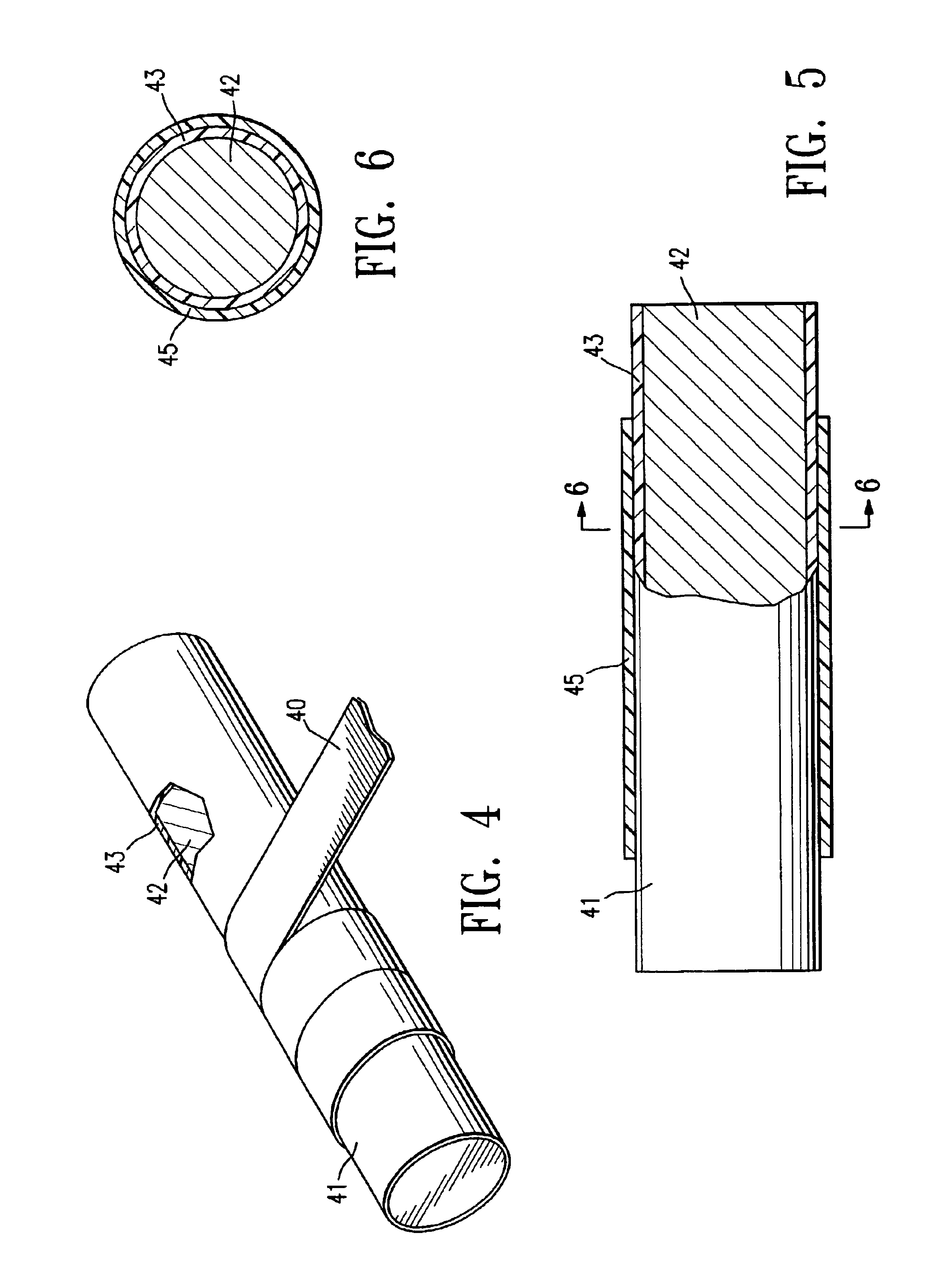The mandrel jacket prevents or inhibits
corrosion of the metallic core of the mandrel during the formation of the fluoropolymeric tube. Corrosive species are produced by the fluoropolymeric material during high temperature heating thereof, thus resulting in a highly corrosive environment at the high temperatures used to fuse sections of the wrapped sheet together. The mandrel jacket protects the metallic core of the mandrel from the highly corrosive environment which would otherwise corrode metals such as stainless steel or
carbon steel used to form the metallic core of the mandrel. The corrosion typically includes affects such as oxidation, discoloration, flaking and loss of mechanical properties. Such corrosion makes it difficult to remove the fluoropolymeric tube from the mandrel without damaging the fluoropolymeric tube, and requires frequent disposal of the mandrel.
The polymeric material forming the jacket is dimensionally stable at the elevated temperatures used during formation of the fluoropolymeric tube, and specifically during high temperature fusion (i.e., thermal) bonding of the wrapped sheet of fluoropolymeric material to form a fluoropolymeric tube. Thus, the dimensions of the jacket do not change significantly during the heating of the wrapped fluoropolymeric material. Preferably, the outer
diameter and length of the jacket are substantially unchanged (i.e., a change of about 0% to about 10%) during the heating of the fluoropolymeric material to form the fluoropolymeric tube. The inner
diameter of the resulting fluoropolymeric tube is determined by the outer
diameter of the mandrel jacket. Consequently, the dimensionally stable jacket facilitates production of a fluoropolymeric tube having a desired inner diameter.
The polymeric material forming the jacket is preferably a high temperature material having a
glass transition temperature (Tg) of about 350° C. to about 450° C., and most preferably about 390° C. to about 420° C. The jacket thus has excellent dimensional stability at the
processing temperature of the fluoropolymeric material. In one embodiment, the polymeric material forming the jacket is selected from the group consisting of thermoset
polyimide, and a
thermoplastic polyimide. The
polyimide materials have relatively high
glass transition temperatures. Additionally, the polyimide materials have a high abrasion resistance and a high modulus which are maintained at elevated temperature. In a presently preferred embodiment, the jacket comprises a thermoset polyimide, due to the high
glass transition temperature of the thermoset polyimide. The thermoset polyimide has a very high glass
transition temperature of approximately 390° C. to about 420° C., more specifically about 400° C. to about 410° C. (as measured by
differential scanning calorimetry (DSC). Additionally, the thermoset polyimide has excellent dimensional stability at the
fluoropolymer fusing temperature of about 370° C. for the duration of the heat treatment, e.g., about 20 to about 30 minutes. Specifically, the thermoset polyimide is crosslinked, and thus has
high dimensional stability at or near the glass
transition temperature of the polyimide. As a result, the polyimide tube maintains thin-walled, controlled dimensions during formation of the fluoropolymeric tube.
Thermoplastic polyimide, such as Aurum available from Mitsui Toatsu Chemical, Inc., which has a Tg of about 230° C. to about 270° C., may also be used, but is less preferred than the more highly dimensionally stable thermoset polyimide. Thus, the mandrel jacket material has
high dimensional stability, and specifically has a glass
transition temperature above the
processing temperature of the fluoropolymeric material, unlike polymeric materials such as
polytetrafluoroethylene and
silicone.
The method of the invention prevents or inhibits corrosion of the metallic core of the mandrel used in forming a polymeric tubular
medical device or component. Moreover, the method facilitates removal of the resulting polymeric tube from the mandrel without damaging the polymeric tube, and provides a tube having a desired inner diameter. These and other advantages of the invention will become more apparent from the following detailed description and accompanying exemplary figures.
 Login to View More
Login to View More 


